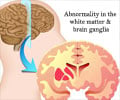Researchers have now published follow-up findings about the treatment of feline audiogenic reflex seizures.

‘Levetiracetam has been observed to be an effective and well-tolerated treatment for cats with hallmark myoclonic seizures. Researchers now want to identify whether levetiracetam will also prevent so-called generalized tonic-clonic seizures in cats.’





A range of sound stimuli has been reported, including the crinkling of tin foil and a metal spoon dropping into a ceramic feeding bowl, through to firewood spitting and even texting on a phone. It was this bizarre collection of triggers that captured the imagination of media around the world, which dubbed the condition 'Tom and Jerry syndrome', and spread the story far and wide. While avoiding the triggering sounds can reduce the incidence of seizures, this is not always practical and so this latest research potentially spells good news for owners of affected cats.
The study compared the efficacy of two antiepileptic drugs, levetiracetam (a relatively novel medication that has proven effective in studies of people with generalized epilepsies that experience myoclonic seizures) and the much older first generation drug phenobarbital, in 57 cats diagnosed with FARS. Cats were treated with one or other drug over a 12 week period; and owners were asked to record the date, number and type of seizures, any signs of illness, side effects and changes in activity or attitude, as well as whether they thought their cat's quality of life had improved, remained the same or deteriorated since starting the medication.
All cats receiving levetiracetam showed a reduction in the number of days that they experienced myoclonic seizures by at least half. In comparison, only 3% of cats showed the same reduction when treated with phenobarbital. The majority of reported side effects, such as lethargy and inappetence, were mild to moderate in both groups and these resolved after about two weeks in the cats treated with levetiracetam; in the phenobarbital group, however, side effects were relatively persistent. Owners of cats treated with phenobarbital perceived no benefit from using the medication; in contrast, all of the owners of cats treated with levetiracetam commented that their cat appeared brighter and more responsive after the first couple of weeks of treatment. Moreover, five cats treated with phenobarbital were switched to levetiracetam after the study, as their owners desired improved seizure control.
Having established that levetiracetam is an effective and well-tolerated treatment for cats with hallmark myoclonic seizures, the next step is to identify whether levetiracetam will also prevent so-called generalized tonic-clonic seizures. This is another seizure type seen in cats with FARS, and is what most people think of as a 'seizure', with the cat losing consciousness and its body stiffening and jerking, often for several minutes.
Advertisement
Source-Eurekalert











